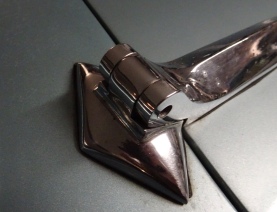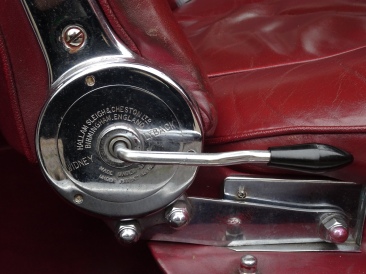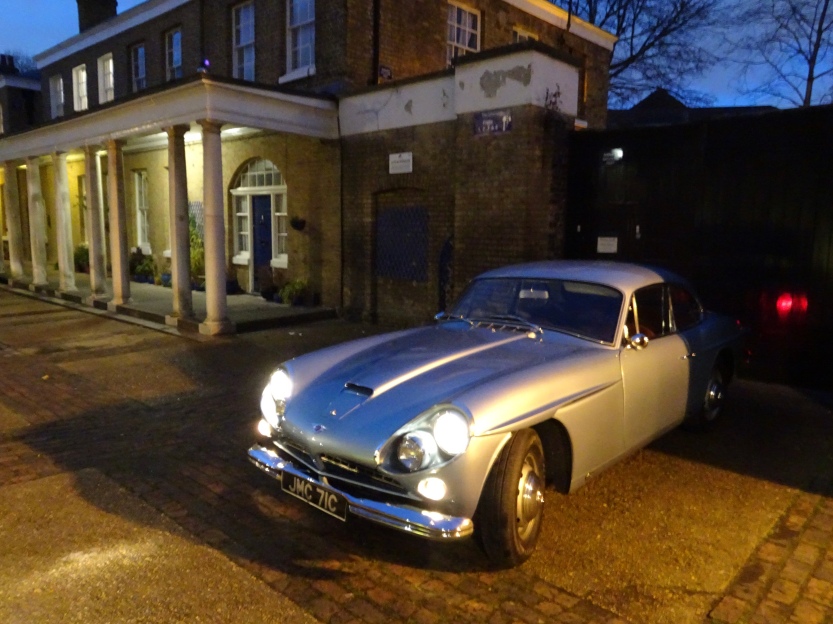
The dear folks at the Classic Car Club have always insisted that the Jensen C-V8 is a forgotten hero. Before Christmas, I needed to borrow a car with four seats for the weekend – and it fitted the bill. I wasn’t filled with excitement. Jared and John at the club were full of praise for its quirks as they explained how to handle them – and then I drove off into the London traffic.
 If you remember Jensen, you probably remember the Interceptor. Commandingly named and designed, it was Jensen’s greatest hit. But you probably won’t remember the C-V8, the older car on which it was based. I now know that it was actually the better car.
If you remember Jensen, you probably remember the Interceptor. Commandingly named and designed, it was Jensen’s greatest hit. But you probably won’t remember the C-V8, the older car on which it was based. I now know that it was actually the better car.
You can’t say it looks better though – but beauty is often only skin deep. The Interceptor had a beautiful Italian skin, whereas this Jensen’s looks came from West Bromwich. This grimy Birmingham suburb where the Jensen was designed and made is known as a place of railway arch engineering, rather than lyrical design. To be fair it also produces a football team of occasional excellence.

The brothers Jensen, Alan and Richards, started off designing sports car bodies for mass-produced cars before the war. It took until after the conflict was over for them to produce their own cars under their own name. But even then, they sourced major components like engines from large manufacturers. Turning the ordinary into something really special was always their secret. Meanwhile they made ends meet by building sports cars for major manufacturers who were uninterested in the challenge of low volumes. Notable cars included the Austin Healey and Volvo P1800.

The C-V8 was their first really high performance car. The body of this 52-year-old car is unmarked – being made not of steel, but very thick fibreglass. Rust has not corrupted it’s smooth complexion. Plastic also lends itself to complex curves – and this car has lots of them. Some of the individual details are good, but its rather American fussiness is distracting. Given its age and the tiny size of Jensen – they only made 500 – the quality is excellent. The doors fit in the perfect way that even Rolls Royce would envy.
So if the body is not beautiful, then what is? Well, having just returned the Jensen to the Classic Car Club from a weekend motoring down to Brighton, I can say… just about everything else.
At the heart of the car is a big, 6-litre Chrysler V8. The power is effortless and in its day made this arguably the world’s fast four seater. Mated to a 3-speed automatic, you don’t notice any of the gear changes except the one into first. Move the column-mounted selector into Drive and the car immediately lurches forward with a massive clunk. And it does the same disconcerting trick in reverse too…
Starting the Jensen after a frosty Friday night proved challenging. The starter motor turns it over well but it just wouldn’t fire. A panicky call to Jared at the club yielded the all-important advice about pumping the accelerator pedal before engaging the starter. It takes a few minutes to warm up, but behaves perfectly for the rest of the day. We are spoiled by electronic fuel injection when it comes to starting a modern car.
The huge and handsome alloy steering wheel has a thin wood rim and is unassisted. It provides plenty of feel for the road and there’s no play in the system. It does exactly what it is told – and immediately lets you know how it feels about it.

The interior is largely covered in deep red leather with matching carpets. The seats are small and comfortable and low backed. Safety hadn’t been invented in 1965 – although fatal accidents had. The seat belts have the same buckles and webbing as an aeroplane and only go over the shoulder – there is no lap belt at all. Rare at the time, the front seats recline with a lovely old chrome mechanism, called the ‘Widney Lyback’. Clearly a useful tool for the playboy owner of a car this jetset expensive…

The dashboard has a row of quaint chrome rimmed dials. The wood veneer has aged as well as the bodywork – and for the same reason. No trees were harmed in its manufacture. Ah, the joys of Formica.
The huge steel chassis is simple but effective, as is the leaf sprung rear axle. Driving over London’s potholes before reaching the M23, the Jensen rides very well. There are none of the creaks and groans of old age that any 52-year old has a right to voice.
The high profile and rather skinny tyres inspire a surprising amount of confidence – despite the slippery December conditions. And visibility through the large, slim-pillared windows also breeds a strong sense of confidence. Even the windscreen wipers work better than the much larger ones on the car that replaced it.
The dynamic contrast with the much bigger Interceptor is all about feeling. Feeling secure, feeling confident, and feeling agile.
 Luisa and I had borrowed it to take Sheila, Luisa’s 89-year-old godmother, out to lunch on the front at Worthing. Somehow, this charming old classic seemed to fit in. Worthing may not be the Cote d’azur but it is very likeable – just like the car. And Sheila liked the car too. To be fair she is a traditionalist – and the Jensen is no revolutionary.
Luisa and I had borrowed it to take Sheila, Luisa’s 89-year-old godmother, out to lunch on the front at Worthing. Somehow, this charming old classic seemed to fit in. Worthing may not be the Cote d’azur but it is very likeable – just like the car. And Sheila liked the car too. To be fair she is a traditionalist – and the Jensen is no revolutionary.
On Monday morning I promised to drop Luisa at the station at 6.45am. But the Jensen had other ideas. It fitted in amongst the Georgian columns in my part of Deptford – and seemed reluctant to leave. Luisa had walked to the station long before the Jensen finally consented to start.

I was sorry to bid it farewell at the club in Pitfield Street. Belonging to the Classic Car Club is like a series of weekend romances. Fun, but fraught with anxiety.
So the Jensen C-V8 may be a footnote in motoring history, but it is rather good and much affordable than the popular Interceptor. Despite its success, the Interceptor was the last Jensen. It’s initial success slowly faded as the car aged. The company found new owners but they could not find the money needed to replace the car with a modern, safe and more economical model.
 If you’ve never seen the C-V8 and want to see one in action, there’s an old TV adventure series starring the car. Called the Baron it was a sub ‘The Saint’, Robin Hood style series.
If you’ve never seen the C-V8 and want to see one in action, there’s an old TV adventure series starring the car. Called the Baron it was a sub ‘The Saint’, Robin Hood style series.
The hard shoulder of British motoring history is littered by tiny bespoke manufacturers unable to afford the huge costs of development, regulation and engineering. They can exist as adjuncts to bigger companies making specials for them, but they can seldom survive in the long-term. Lost names include Trident, MG, Gilbern, Marcos and AC. Morgan survives by producing an instant antique, while Lotus prop up manufacturing with consultancy services. TVR is rising from the dead – so there is some hope.
We have lost something special with the demise of so many companies like Jensen. But if you really hanker over this golden age of British bespokery, you can pick a good one up for the relatively modest figure of £35,000. On the other hand you could be sensible, and cycle back home. Which is what I did – as usual.
Incredible detail on those Jensons Great looking car.
LikeLike
Hadn’t even heard of this one but enjoyed the article. Agree it’s not as good-looking as the Interceptor but it still looks classy and I bet it sounds great… Talking of all those lost names of the British motor industry, does the Classic Car Club have any Jowetts? If so, please review! 🙂
LikeLike